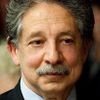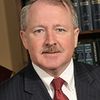Governor of Wisconsin
 From Ballotpedia - Reading time: 16 min
From Ballotpedia - Reading time: 16 min
| Wisconsin Governor | |
 | |
| General information | |
| Office Type: | Partisan |
| Office website: | Official Link |
| Compensation: | $152,756 |
| 2022 FY Budget: | $4,237,300 |
| Term limits: | None |
| Structure | |
| Length of term: | 4 years |
| Authority: | Wisconsin Constitution, Article V, Section I |
| Selection Method: | Elected |
| Current Officeholder | |
Governor of Wisconsin
Tony Evers | |
| Elections | |
| Next election: | November 8, 2022 |
| Last election: | November 6, 2018 |
| Other Wisconsin Executive Offices | |
| Governor • Lieutenant Governor • Secretary of State • Attorney General • Treasurer • Auditor • Superintendent of Education • Agriculture Commissioner • Insurance Commissioner • Natural Resources Commissioner • Labor Commissioner • Public Service Commission | |
The Governor of the State of Wisconsin is an elected constitutional officer, the head of the executive branch and the highest state office in Wisconsin. The governor is popularly elected every four years by a plurality and has no term limit.[1]
Wisconsin has a divided government where neither party holds a trifecta. The Democratic Party controls the office of governor, while the Republican Party controls both chambers of the state legislature.
Wisconsin has a Democratic triplex. The Democratic Party controls the offices of governor, secretary of state, and attorney general.
Current officer[edit]
The 46th and current governor is Tony Evers, a Democrat elected in 2018.[2]
Authority[edit]
The state Constitution addresses the office of the governor in Article V, the Executive Department.
Under Article V, Section I:
|
The executive power shall be vested in a governor... |
Qualifications[edit]
In order to be eligible for the office of governor of Wisconsin, a candidate must be:
- a citizen of the United States
- a qualified voter in the state of Wisconsin
- at least 18 years old
Additionally, general requirements to hold office in Wisconsin stipulate that no candidate may:
- hold any office, honor or profit under any foreign power
- hold any federal office
- be a convicted felon
- be convicted of any misdemeanor involving a violation of the public trust[3]
Elections[edit]
Wisconsin elects governors in the midterm elections, that is, even years that are not presidential election years. For Wisconsin, 2018, 2022, 2026, 2030 and 2034 are all gubernatorial election years. Legally, the gubernatorial inauguration is always set for the first Monday in the January following an election.
The governor of Wisconsin is elected in a direct election—the candidate with the most votes becomes governor. In the event that two candidates receive an equal number of votes which is higher than that received by any other candidate, the members of the state legislature vote between the two at their next session.
History[edit]
Under the original Wisconsin Constitution, governors were elected for a term of two years; in 1967, the constitution was amended to increase the term of office to four years, beginning with the governor elected in the 1970 election. There is no limit to the number of terms a governor may hold.
Term limits[edit]
- See also: States with gubernatorial term limits
Wisconsin governors do not face any term limits.
Removal[edit]
The governor may be removed from office through an impeachment trial or through a recall election.
Four governors have resigned for various reasons, and none have been removed from office through impeachment.
However, Arthur MacArthur, Sr., who, as lieutenant governor, became governor upon the resignation of William Barstow, was removed after the Wisconsin Supreme Court ruled that Barstow's opponent in the election, Coles Bashford, was the election's legitimate winner. Bashford initially won by 157 votes and was later found to have forged election returns from non-existent precincts.
Recall[edit]
Recall elections are governed under Article XIII, Section 12 of the Wisconsin Constitution.
All elected officers are subject to recall, after the first year of their term, by filing a petition with the same officer who accepts the nominating petition for the office in question. For example, as nominating petitions for statewide office are filed with the Secretary of State, the petition to recall a statewide officer would also be filed with the Secretary of State.
The petition must have valid signatures equal to 25% of the votes cast for the governor in the city, county, or municipality which the targeted incumbent represents. As the governor is a statewide office, the petition threshold is 25% of all votes cast for governor in the last election.
Currently, that number would be 540,208, or 25% of 2,160,832, the total ballots cast in the 2010 gubernatorial race.
If the petition is valid, the filing officer must call a recall election for the Tuesday of the 6th week after the petition is filed. If that Tuesday is a legal holiday, the recall election is held the next day.
An incumbent under recall holds his or her office and carries out the duties until the results of the recall are declared. Unless a recalled incumbent declines to run within ten days of the recall election being called, the incumbent is assumed to have declared for the race.
For a partisan office, such as the governor, a recall primary is held for each party legally entitled to a separate ballot. if a recall primary is called, it is on the same date as the recall primary.
If the recall fails, the incumbent may not be recalled again for the remainder of his or her term.
Impeachment[edit]
- See also: Gubernatorial impeachment procedures
Impeachments of civil officers are governed under Article VII, Section 1 of the Wisconsin Constitution.
An impeachment trial is carried out by the Wisconsin State Assembly, if a majority of its members agree to the impeachment. A governor may also choose to resign from office.
The court of impeachment for a civil officer is the Wisconsin State Senate, a super majority of whose members must agree to impeach. Before the impeachment begins, each Senator must take an oath of impartiality.
Though the Lieutenant Governor of Wisconsin is Constitutionally the President of the Senate, she or he may not act as an officer of the court when the officer being impeached is the governor.
If the Senate does impeach, the punishment may not extend beyond removal from office and disqualification to hold any other office, honor, or profit in the state. However, an impeached officer may still be liable to indictment, trial, and punishment according to law.
Partisan composition[edit]
The chart below shows the partisan composition of the Office of the Governor of Wisconsin from 1992 to 2013.
2018[edit]
General election for Governor of Wisconsin
The following candidates ran in the general election for Governor of Wisconsin on November 6, 2018.
Candidate |
% |
Votes |
||
| ✔ |
|
Tony Evers (D) |
49.5
|
1,324,307 |
|
|
Scott Walker (R) |
48.4
|
1,295,080 | |
|
|
Phillip Anderson (L) |
0.8
|
20,225 | |
|
|
Maggie Turnbull (Independent) |
0.7
|
18,884 | |
|
|
Michael White (G) |
0.4
|
11,087 | |
|
|
Arnie Enz (The Wisconsin Party) |
0.1
|
2,745 | |
| Other/Write-in votes |
0.0
|
980 | ||
| Total votes: 2,673,308 | ||||
Do you want a spreadsheet of this type of data? Contact our sales team. |
||||
Democratic primary for Governor of Wisconsin
The following candidates ran in the Democratic primary for Governor of Wisconsin on August 14, 2018.
Candidate |
% |
Votes |
||
| ✔ |
|
Tony Evers |
41.8
|
225,082 |
|
|
Mahlon Mitchell |
16.3
|
87,926 | |
|
|
Kelda Roys |
12.8
|
69,086 | |
|
|
Kathleen Vinehout |
8.2
|
44,168 | |
|
|
Michael McCabe |
7.4
|
39,885 | |
|
|
Matthew Flynn |
5.9
|
31,580 | |
|
|
Paul Soglin |
5.2
|
28,158 | |
|
|
Andy Gronik |
1.2
|
6,627 | |
|
|
Dana Wachs |
0.8
|
4,216 | |
|
|
Josh Pade |
0.4
|
1,908 | |
| Total votes: 538,636 | ||||
Do you want a spreadsheet of this type of data? Contact our sales team. |
||||
Republican primary for Governor of Wisconsin
Incumbent Scott Walker defeated Robert Meyer in the Republican primary for Governor of Wisconsin on August 14, 2018.
Candidate |
% |
Votes |
||
| ✔ |
|
Scott Walker |
91.6
|
417,276 |
|
|
Robert Meyer |
8.4
|
38,269 | |
| Total votes: 455,545 | ||||
Do you want a spreadsheet of this type of data? Contact our sales team. |
||||
Green primary for Governor of Wisconsin
Michael White advanced from the Green primary for Governor of Wisconsin on August 14, 2018.
Candidate |
% |
Votes |
||
| ✔ |
|
Michael White |
100.0
|
817 |
| Total votes: 817 | ||||
Do you want a spreadsheet of this type of data? Contact our sales team. |
||||
Libertarian primary for Governor of Wisconsin
Phillip Anderson advanced from the Libertarian primary for Governor of Wisconsin on August 14, 2018.
Candidate |
% |
Votes |
||
| ✔ |
|
Phillip Anderson |
100.0
|
1,673 |
| Total votes: 1,673 | ||||
Do you want a spreadsheet of this type of data? Contact our sales team. |
||||
Withdrawn or disqualified candidates
- Mike Crute (D)
- Ramona Whiteaker (D)
- Jeff Rumbaugh (D)
- Andrew Lust (D)
- Michele Doolan (D)
- Bob Harlow (D)
- Ryan Cason (R)
Full history[edit]
2014[edit]
- See also: Wisconsin gubernatorial election, 2014
Republican incumbent Scott Walker won re-election on November 4, 2014.
| Governor and Lieutenant Governor of Wisconsin, 2014 | ||||
|---|---|---|---|---|
| Party | Candidate | Vote % | Votes | |
| Republican | 52.3% | 1,259,706 | ||
| Democrat | Mary Burke/John Lehman | 46.6% | 1,122,913 | |
| Libertarian | Robert Burke/Joseph Brost | 0.8% | 18,720 | |
| Independent | Dennis Fehr | 0.3% | 7,530 | |
| Nonpartisan | Scattering | 0.1% | 1,248 | |
| Nonpartisan | Write-in votes | 0% | 200 | |
| Total Votes | 2,410,317 | |||
| Election results via Wisconsin Government Accountability Board | ||||
To view the electoral history dating back to 2002 for the office of Governor/Lt. Governor of Wisconsin, Click [show] to expand the section. | |
|---|---|
|
Wisconsin's Governors and Lieutenant Governors run on the same ticket. | |
2012
- See also: Scott Walker recall, Wisconsin (2012)
Scott Walker defeated Tom Barrett (D) and Hariprasad "Hari" Trivedi (I) in a recall election on June 5, 2012. A primary took place on May 8. While governors and lieutenant governors normally run on a joint ticket in Wisconsin, there is a separate set of rules for a recall. Each official must be recalled separately and face a separate recall election.
| Recall of Wisconsin Governor Scott Walker, 2012 | ||||
|---|---|---|---|---|
| Party | Candidate | Vote % | Votes | |
| Republican | 53.1% | 1,335,585 | ||
| Democratic | Tom Barrett | 46.3% | 1,164,480 | |
| Independent | Hari Trivedi | 0.6% | 14,463 | |
| Scattering | - | 0.1% | 1,537 | |
| Total Votes | 2,516,065 | |||
| Election results via Wisconsin Government Accountability Board | ||||
2010
On November 2, 2010, Scott Walker/Rebecca Kleefisch won election to the office of Wisconsin Governor/Lt. Governor. They defeated Tom Barrett/Tom Nelson (D) and six third-party candidates in the general election.
| Wisconsin Governor/Lt. Governor, 2010 | ||||
|---|---|---|---|---|
| Party | Candidate | Vote % | Votes | |
| Republican | 52.2% | 1,128,941 | ||
| Democratic | Tom Barrett/Tom Nelson | 46.5% | 1,004,303 | |
| Independent | Jim Langer/No candidate | 0.5% | 10,608 | |
| Libertarian | No candidate/Terry Virgil | 0.3% | 6,790 | |
| Common Sense | James James/No candidate | 0.4% | 8,273 | |
| Independent | Leslie Ervin Smetak/David Myron Smetak | 0% | 19 | |
| Independent | Patricia Messici/No candidate | 0% | 22 | |
| Independent | Hari Trivedi/No candidate | 0% | 18 | |
| Scattering | Various | 0.1% | 1,858 | |
| Total Votes | 2,160,832 | |||
| Election results via Wisconsin Government Accountability Board. | ||||
2006
On November 7, 2006, Jim Doyle/Barbara C. Lawton won re-election to the office of Wisconsin Governor/Lt. Governor. They defeated Mark Green/Jean Hundertmark (R) and Nelson Eisman/Leon Todd (G) in the general election.
| Wisconsin Governor/Lt. Governor, 2006 | ||||
|---|---|---|---|---|
| Party | Candidate | Vote % | Votes | |
| Democratic | 52.7% | 1,139,115 | ||
| Republican | Mark Green/Jean Hundertmark | 45.3% | 979,427 | |
| Green | Nelson Eisman/Leon Todd | 1.9% | 40,709 | |
| Scattering | Various | 0.1% | 2,449 | |
| Total Votes | 2,161,700 | |||
| Election results via Wisconsin State Elections Board. | ||||
2002
On November 5, 2002, Jim Doyle/Barbara C. Lawton won election to the office of Wisconsin Governor/Lt. Governor. They defeated Scott McCallum/M.A. Farrow (D) and six third-party challengers in the general election.
| Wisconsin Governor/Lt. Governor, 2002 | ||||
|---|---|---|---|---|
| Party | Candidate | Vote % | Votes | |
| Democratic | 46.1% | 800,515 | ||
| Republican | Scott McCallum/M.A. Farrow Incumbent | 42.3% | 734,779 | |
| Green | Jim Young/Jeff Peterson | 0.3% | 4,411 | |
| Libertarian | Ed Thompson/M. Reynolds | 10.7% | 185,455 | |
| Independent | Alan D. Eisenberg | 0.2% | 2,847 | |
| Independent | Ty A. Bollerud | 0.2% | 2,637 | |
| Independent | Mike Mangan | 0.1% | 1,710 | |
| Independent | Aneb Jah Rasta | 0.1% | 929 | |
| Scattering | Various | 0.1% | 2,366 | |
| Total Votes | 1,735,649 | |||
| Election results via Wisconsin State Election Board. | ||||
Vacancies[edit]
- See also: How gubernatorial vacancies are filled
Details of vacancy appointments are addressed under Article V, Sections 7 and 8.
If a sitting governor dies, resigns, or is removed, the lieutenant governor becomes governor for the remainder of the term.
If a sitting governor is absent, unable to discharge the office, or impeached, the lieutenant governor serves as "acting governor" until the elected governor returns, recovers, or the impeachment is vacated. The elected lieutenant governor may serve as acting governor for the remainder of the term.
In either case, if the lieutenant governor is unable or unwilling to serve as acting governor, the secretary of state is next in the line of succession.
Duties[edit]
The governor of Wisconsin is responsible for ensuring that the laws of Wisconsin are carried out (§ 4), and is also required to "communicate to the legislature, at every session, the condition of the state, and recommend such matters to them for their consideration as he may deem expedient (§ 4)."
The governor is the commander-in-chief of the militia of the state (§ 4). If it is deemed necessary, the governor may also convene extraordinary sessions of the state legislature (§ 4). The governor has the power to pardon or commute sentences or grant reprieves, except in cases of treason or impeachment (§ 6).
Other duties and privileges of the office include:
- Vetoing bills, including appropriations, subject to a majority override of the legislature and provided the governor does not alter the meaning of a bill or a word in it by striking out individual letters (§ 10)
- Reconvening the legislature away from the seat of government in the case of emergency, attack, or epidemic (§ 4)
- Transacting all civil and military business of the state and expediting all measures resolved upon by the legislature (§ 4)
- Issuing writs of election to fill vacancies in either chamber of the legislature (Article IV, § 14)
- Making appointments to fill any vacancy on the Wisconsin Supreme Court or any Court of Record (Article VII, § 9)
- Nominating an appointee if the office of the lieutenant governor becomes vacant, subject to confirmation by both the Senate and the General Assembly (Article XIII, § 10)[4]
Divisions[edit]
Note: Ballotpedia's state executive officials project researches state official websites for information that describes the divisions (if any exist) of a state executive office. That information for the Governor of Wisconsin has not yet been added. After extensive research we were unable to identify any relevant information on state official websites. If you have any additional information about this office for inclusion on this section and/or page, please email us.
State budget[edit]
Role in state budget[edit]
- See also: Wisconsin state budget and finances;;
Wisconsin operates on a biennial budget cycle. The sequence of key events in the budget process is as follows:[5]
- Budget instructions are sent to state agencies in June.
- State agencies submit budget requests in September.
- The governor submits his or her proposed budget to the Wisconsin State Legislature in January.
- The legislature adopts a budget in June or July. A simple majority is needed to pass a budget.
- The biennial budget cycle begins in July.
Wisconsin is one of 44 states in which the governor has line item veto authority.[5]
The governor is constitutionally and statutorily required to submit a balanced budget. In addition, the legislature is required to pass a balanced budget.[5]
Governor's office budget[edit]
The budget for the governor's Office in Fiscal Year 2022 was $4,237,300.[6]
Compensation[edit]
![]() See statutes: Chapter 20, Section 923 of the Wisconsin Statutes
See statutes: Chapter 20, Section 923 of the Wisconsin Statutes
The governor's annual salary is fixed by law, pursuant to Article IV, Section 26 of the Wisconsin Constitution, which states that "the compensation of a public officer may not be increased or diminished during the term of office."
Since the 2003 approval of Wisconsin Act 33, the governor's compensation has been set by the Wisconsin Office of State Employment Relations (OSER), in accordance with Section 20.923 of the Wisconsin Statutes.[7] Under the amended version of §20.923, the director of OSER submits biennial proposals for adjustments to compensation plan to the Wisconsin Legislature. Changes are subject to approval by the legislature's joint committee on employment relations and, if passed by the committee, the governor himself, although his veto power is limited. Effective for the four-year term beginning January 2015, the governor's salary was raised 2 percent over the prior term.[8]
2020[edit]
In 2020, the governor received a salary of $152,756, according to the Council of State Governments.[9]
2019[edit]
In 2019, the governor received a salary of $152,756, according to the Council of State Governments.[10]
2018[edit]
In 2018, the governor received a salary of $147,328, according to the Council of State Governments.[11]
2017[edit]
In 2017, the governor received a salary of $147,328, according to the Council of State Governments.[12]
2016[edit]
In 2016, the governor received a salary of $147,328, according to the Council of State Governments.[13]
2015[edit]
In 2015, the governor’s salary was increased to $147,328, according to the Council of State Governments. [14]
2014[edit]
In 2014, the governor received a salary of $144,423, according to the Council of State Governments.[15]
2013[edit]
In 2013, the governor's salary remained at $144,423.[16]
2012[edit]
In 2012, the Wisconsin Governor was paid an estimated $144,423. This figure comes from the Council of State Governments.
History[edit]
Partisan balance 1992-2013[edit]
From 1992-2013, in Wisconsin there were Democratic governors in office for eight years while there were Republican governors in office for 14 years, including the last three. Wisconsin was under Republican trifectas for the last three years of the study period.
Across the country, there were 493 years of Democratic governors (44.82%) and 586 years of Republican governors (53.27%) from 1992 to 2013.
Over the course of the 22-year study, state governments became increasingly more partisan. At the outset of the study period (1992), 18 of the 49 states with partisan legislatures had single-party trifectas and 31 states had divided governments. In 2013, only 13 states had divided governments, while single-party trifectas held sway in 36 states, the most in the 22 years studied.
The chart below shows the partisan composition of the Office of the Governor of Wisconsin, the Wisconsin State Senate and the Wisconsin House of Representatives from 1992 to 2013.
SQLI and partisanship[edit]
The chart below depicts the partisanship of the Wisconsin state government and the state's SQLI ranking for the years studied. For the SQLI, the states were ranked from 1-50, with 1 being the best and 50 the worst. During the course of the study, Wisconsin experienced both Democratic and Republican trifectas as well as divided governments. The state's SQLI rankings were higher earlier in the study, with its highest ranking, finishing 7th, occurring in 1992, 1995 and 1998 during both Republican trifectas and a divided government. Its lowest ranking, finishing 30th, occurred in 2007 during a divided government. The state's rankings began to improve during the most recent years of the study, finishing 13th in 2012 during a Republican trifecta.
- SQLI average with Democratic trifecta: 21.00
- SQLI average with Republican trifecta: 10.00
- SQLI average with divided government: 17.27
Historical officeholders[edit]
There have been 46 governors of Wisconsin since 1848. Of the 46 officeholders, 31 were Republican, 12 were Democrats, 1 was Democratic/Independent, 1 was a Progressive, and 1 was a Whig.[17]
| List of Former Officeholders from 1848-Present | |||||
|---|---|---|---|---|---|
| # | Name | Tenure | Party | ||
| 1 | Nelson Dewey | 1848 - 1852 | |||
| 2 | Leonard James Farwell | 1852 - 1854 | Whig | ||
| 3 | William Augustus Barstow | 1854 - 1856 | |||
| 4 | MacArthur Arthur | 1856 - 1856 | |||
| 5 | Coles Bashford | 1856 - 1858 | |||
| 6 | Alexander Williams Randall | 1858 - 1862 | |||
| 7 | Louis Powell Harvey | 1862 - 1862 | |||
| 8 | Edward Salomon | 1862 - 1864 | |||
| 9 | James Taylor Lewis | 1864 - 1866 | |||
| 10 | Lucius Fairchild | 1866 - 1872 | |||
| 11 | Cadwallader Colden Washburn | 1872 - 1874 | |||
| 12 | William R. Taylor | 1874 - 1876 | |||
| 13 | Harrison Ludington | 1876 - 1878 | |||
| 14 | William E. Smith | 1878 - 1882 | |||
| 15 | Jeremiah M. Rusk | 1882 - 1889 | |||
| 16 | William Dempster Hoard | 1889 - 1891 | |||
| 17 | George W. Peck | 1891 - 1895 | |||
| 18 | William H. Upham | 1895 - 1897 | |||
| 19 | Edward Scofield | 1897 - 1901 | |||
| 20 | Robert M. La Follette | 1901 - 1906 | |||
| 21 | James O. Davidson | 1906 - 1911 | |||
| 22 | Francis E. McGovern | 1911 - 1915 | |||
| 23 | Emanuel L. Philipp | 1915 - 1921 | |||
| 24 | John J. Blaine | 1921 - 1927 | |||
| 25 | Fred R. Zimmerman | 1927 - 1929 | |||
| 26 | Walter J. Kohler | 1929 - 1931 | |||
| 27 | Phillip F. La Follette | 1931 - 1933 | |||
| 28 | Albert G. Schmedeman | 1933 - 1935 | |||
| 29 | Phillip F. La Follette | 1935 - 1939 | Progressive | ||
| 30 | Julius Peter Heil | 1939 - 1943 | |||
| 31 | Walter S. Goodland | 1943 - 1947 | |||
| 32 | Oscar Rennebohm | 1947 - 1951 | |||
| 33 | Walter J. Kohler | 1950 - 1957 | |||
| 34 | Vernon W. Thomson | 1957 - 1959 | |||
| 35 | Gaylord Anton Nelson | 1959 - 1963 | |||
| 36 | John W. Reynolds | 1963 - 1965 | |||
| 37 | Warren P. Knowles | 1965 - 1971 | |||
| 38 | Patrick Joseph Lucey | 1971 - 1977 | |||
| 39 | Martin James Schreiber | 1977 - 1979 | |||
| 40 | Lee Sherman Dreyfus | 1979 - 1983 | |||
| 41 | Anthony S. Earl | 1983 - 1987 | |||
| 42 | Tommy G. Thompson | 1987 - 2001 | |||
| 43 | Scott McCallum | 2001 - 2003 | |||
| 44 | Jim Doyle | 2003 - 2011 | |||
| 45 | Scott Walker | 2011 - 2019 | |||
| 46 | Tony Evers | 2019 - present | |||
State profile[edit]
| Demographic data for Wisconsin | ||
|---|---|---|
| Wisconsin | U.S. | |
| Total population: | 5,767,891 | 316,515,021 |
| Land area (sq mi): | 54,158 | 3,531,905 |
| Race and ethnicity** | ||
| White: | 86.5% | 73.6% |
| Black/African American: | 6.3% | 12.6% |
| Asian: | 2.5% | 5.1% |
| Native American: | 0.9% | 0.8% |
| Pacific Islander: | 0% | 0.2% |
| Two or more: | 2.1% | 3% |
| Hispanic/Latino: | 6.3% | 17.1% |
| Education | ||
| High school graduation rate: | 91% | 86.7% |
| College graduation rate: | 27.8% | 29.8% |
| Income | ||
| Median household income: | $53,357 | $53,889 |
| Persons below poverty level: | 15% | 11.3% |
| Source: U.S. Census Bureau, "American Community Survey" (5-year estimates 2010-2015) Click here for more information on the 2020 census and here for more on its impact on the redistricting process in Wisconsin. **Note: Percentages for race and ethnicity may add up to more than 100 percent because respondents may report more than one race and the Hispanic/Latino ethnicity may be selected in conjunction with any race. Read more about race and ethnicity in the census here. | ||
Presidential voting pattern[edit]
- See also: Presidential voting trends in Wisconsin
Wisconsin voted for the Democratic candidate in four out of the five presidential elections between 2000 and 2016.
Pivot Counties (2016)
Ballotpedia identified 206 counties that voted for Donald Trump (R) in 2016 after voting for Barack Obama (D) in 2008 and 2012. Collectively, Trump won these Pivot Counties by more than 580,000 votes. Of these 206 counties, 23 are located in Wisconsin, accounting for 11.17 percent of the total pivot counties.[18]
Pivot Counties (2020)
In 2020, Ballotpedia re-examined the 206 Pivot Counties to view their voting patterns following that year's presidential election. Ballotpedia defined those won by Trump won as Retained Pivot Counties and those won by Joe Biden (D) as Boomerang Pivot Counties. Nationwide, there were 181 Retained Pivot Counties and 25 Boomerang Pivot Counties. Wisconsin had 21 Retained Pivot Counties and two Boomerang Pivot Counties, accounting for 11.60 and 8.00 percent of all Retained and Boomerang Pivot Counties, respectively.
More Wisconsin coverage on Ballotpedia
- Elections in Wisconsin
- United States congressional delegations from Wisconsin
- Public policy in Wisconsin
- Influencers in Wisconsin
- Wisconsin fact checks
- More...
Recent news[edit]
The link below is to the most recent stories in a Google news search for Wisconsin + Governor
Contact information[edit]
Office of the Governor
115 East State Capitol
Madison, WI 53702
Phone:608-266-1212
TTY:608-267-6790
Fax:608-267-8983
See also[edit]
External links[edit]
Footnotes[edit]
- ↑ Wisconsin Legislature, "Wisconsin Constitution, Section V," accessed January 14, 2021
- ↑ Governor Tony Evers, "About the Governor," accessed January 14, 2021
- ↑ Wisconsin Legislature, "Wisconsin Constitution, Section III and Section V," accessed January 14, 2021
- ↑ Wisconsin Legislature, "Wisconsin Constitution," accessed January 14, 2021
- ↑ 5.0 5.1 5.2 National Association of State Budget Officers, "Budget Processes in the States, Spring 2015," accessed February 5, 2021
- ↑ Wisconsin State Legislature, "2021-2022 Appropriations." accessed September 29, 2021
- ↑ Wisconsin State Legislature, "Wisconsin Statutes: 20.923(2)(a)," accessed January 14, 2021
- ↑ Wisconsin Legislature, "Wisconsin Briefs from the Legislative Reference Bureau: SALARIES OF STATE ELECTED OFFICIALS EFFECTIVE JANUARY 2015," accessed January 14, 2021
- ↑ Council of State Governments, "Selected State Administrative Officials: Annual Salaries, 2020," accessed January 14, 2021
- ↑ Council of State Governments, "Selected State Administrative Officials: Annual Salaries, 2019," accessed January 14, 2021
- ↑ Council of State Governments, "Selected State Administrative Officials: Annual Salaries, 2018," accessed January 14, 2021
- ↑ Council of State Governments, "Selected State Administrative Officials: Annual Salaries, 2017," accessed January 14, 2021
- ↑ Council of State Governments, "Selected State Administrative Officials: Annual Salaries, 2016," accessed August 27, 2016
- ↑ Council of State Governments, "Selected State Administrative Officials: Annual Salaries, 2015," accessed August 27, 2016
- ↑ Council of State Governments, "Selected State Administrative Officials: Annual Salaries," accessed December 8, 2014
- ↑ Council of State Governments, "CSG Releases 2013 Governor Salaries," June 25, 2013
- ↑ National Governors Association, "Former governors of Wisconsin," accessed January 14, 2021
- ↑ The raw data for this study was provided by Dave Leip of Atlas of U.S. Presidential Elections.
| ||||||||||||||||
| |||||||||||
 |
State of Wisconsin Madison (capital) |
|---|---|
| Elections |
What's on my ballot? | Elections in 2021 | How to vote | How to run for office | Ballot measures |
| Government |
Who represents me? | U.S. President | U.S. Congress | Federal courts | State executives | State legislature | State and local courts | Counties | Cities | School districts | Public policy |
 KSF
KSF





























